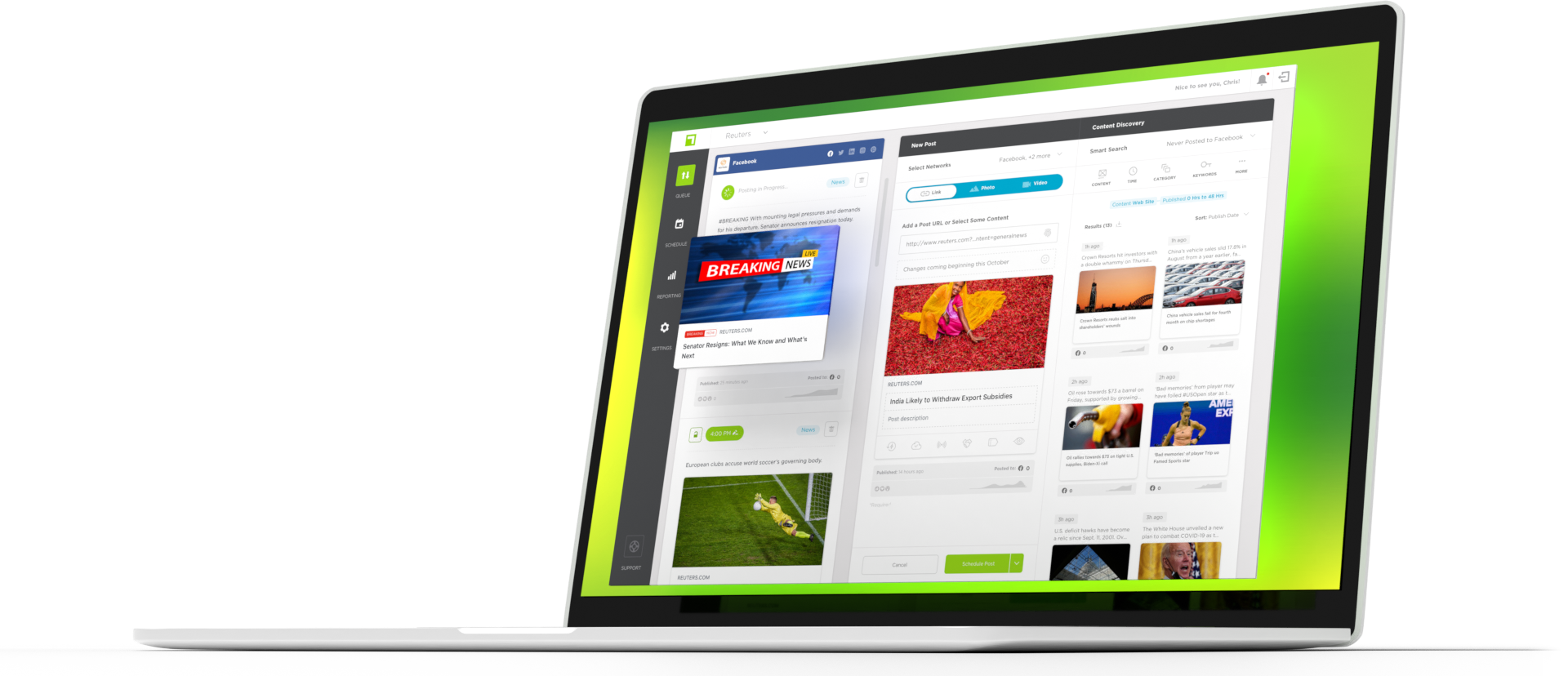There are two significant types of content recirculation on Facebook:
Evergreen Recirculation: Posts that you can repeatedly post that tend to have high performance and generally do not have a shelf life.
Recent Content Recirculation: Content that isn’t breaking news but has a shorter shelf life than an evergreen piece. You can get more out of what you’re already creating by recirculating it well!
If you aren’t up to speed on creating or identifying evergreen content or how to recirculate it, go ahead and dive in. If you’re interested in having our AI do the work, reach out and set up a demo. We can help!
So, we’ll assume you’ve set up an evergreen strategy and are already maximizing that. Look at another opportunity in content recirculation: Recent recirculation. This means that you can post new content more than one time, effectively reaching more people and driving more traffic.
Though, you don’t want to post the same thing over and over. Where’s the balance?
Here’s a chart that shows the life of individual posts and the average impression longevity of content on Facebook:

The chart above indicates that some content can have a longer life on Facebook that you will want to protect as you approach your posting strategy.
What does the data say?
Based on our data analysis of millions of social posts, waiting at least 96 hours or 4 days to repost content is the sweet spot to maximize post performance. Reposting after 96 hours is the point where you will typically not gobble up your original post’s impressions with recirculation and see the highest bump in impressions and traffic with your 2nd post.
Based on our data and the work we do with some of the most successful publishers on the web, here are some best practices to consider when reposting content:
- For news or entertainment publishers, recirculating content within a 24 or 48 hour window isn’t a bad strategy. In fact, can be a highly effective strategy at driving traffic when done right – leveraging data and editorial best practices.
- Very time-sensitive content should almost never be recirculated unless it is a developing story where recirculation makes sense to update your audience. In this case, recirculating within hours makes sense and has little impact on Facebook algorithm’s treatment of your content.
- Tagging content as eligible for weekend recirculation during the week can help stockpile content for periods of lower production (i.e, weekends).
- Creating “Best of” lists (i.e. Best of the Last Week, etc) can boost traffic and ensure your highest-performing content is being prioritized for recirculation.
Every page and article has its journey. They don’t all have to end after the first social media post. True Anthem can help you get the most out of every piece you create.

